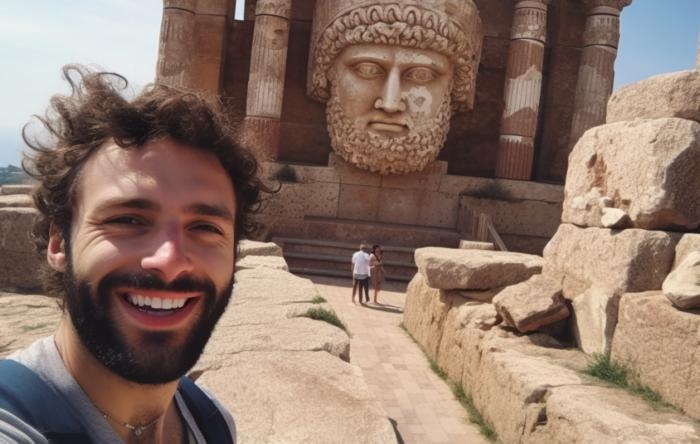The Evolution of Self-Portraits: From Paintings to Selfies

A Brief History of Self-PortraitsOnce upon a time, in a world without Instagram and Snapchat, people still managed to create self-portraits. Can you believe it? These ancient creatures, known as artists, painted their own faces on canvas. And they didn't even use a filter. What a primitive time!
Self-portraits have been around for centuries. They were the original way for artists to say, "Hey world, this is what I look like, and I'm kind of a big deal." But even though self-portraits have evolved from the painstaking process of painting to the convenience of snapping a selfie, the basic premise of showcasing oneself remains the same.
Why Artists Created Self-PortraitsWhen you think about it, self-portraits are a very human thing. It's the ultimate display of narcissism – "Look at me, world! I'm important!" But, they also have practical purposes. Many artists created self-portraits as a form of self-promotion, especially when they were starting out and trying to attract patrons.
Others used self-portraits as a way to study and understand the human form. And let's be honest – who's a more readily available model than oneself? No need to worry about scheduling conflicts or models demanding to be paid for their time.
Some artists even used self-portraits as a form of therapy, exploring their emotions and inner turmoil through their art. For example, Frida Kahlo's self-portraits often reflected her physical and emotional pain. So, in a way, self-portraits were the original form of oversharing on social media.
From Paintings to PhotographsAs technology advanced, so too did the self-portrait. With the invention of the camera (which, believe it or not, used to require film and a darkroom to develop photos), artists could now capture their likeness with greater accuracy and ease. This allowed for a wider range of people to create self-portraits, not just those skilled with a paintbrush.
Photographic self-portraits also allowed for greater experimentation with lighting, angles, and composition. Some of the most iconic photographic self-portraits come from the likes of Man Ray, Cindy Sherman, and Robert Mapplethorpe, who each used their camera to explore identity, gender, and sexuality.
Enter the SelfieFast forward to the 21st century, and the self-portrait has now morphed into the infamous selfie. A term that would have left Van Gogh scratching his head in confusion, the selfie took the world by storm with the widespread availability of camera phones and social media.
No longer reserved for artists and photographers, the selfie has become a daily ritual for many – a way to document our lives, seek validation, or simply kill time while waiting for the bus.
But are selfies really that different from traditional self-portraits? In some ways, yes. The instant gratification and ease of taking a selfie has led to an oversaturation of self-portraiture, with countless images flooding our social media feeds each day. The artistry and intention behind a carefully crafted self-portrait has, in many cases, been replaced with a duck-face and a Valencia filter.
However, that's not to say that there isn't still value in the humble selfie. In fact, some could argue that selfies have democratized self-portraiture, allowing anyone with a smartphone to create and share their own artistic vision.
Practical Advice for the Modern Self-PortraitistSo, how can we elevate the selfie to the level of a true self-portrait? Here are some practical tips for taking your selfie game to the next level:
- Consider your composition: Move beyond the standard front-facing, arm-extended selfie. Experiment with different angles, poses, and backgrounds to create a more interesting and unique image.
- Lighting is key: Good lighting can make or break your selfie. Try to avoid harsh shadows and unflattering angles, and instead seek out soft, natural light. A well-lit selfie can make all the difference in the world.
- Embrace your flaws: Don't be afraid to show the real you, imperfections and all. After all, the most interesting self-portraits often come from a place of vulnerability and honesty.
- Be intentional: Instead of snapping a quick selfie for the sake of it, take some time to think about what story you want to tell with your self-portrait. What emotions or experiences do you want to convey?
- Have fun: At the end of the day, self-portraits – whether painted or snapped – should be a form of self-expression and enjoyment. So, go ahead and strike a pose, channel your inner Rembrandt, and share your masterpiece with the world. Or at least your Instagram followers.
In conclusion, the self-portrait has come a long way from its humble beginnings as a painted canvas. But despite the technological advancements and the rise of the selfie, the core purpose of self-portraiture remains the same – to capture and share our own unique perspective and experience of the world.
|
|






